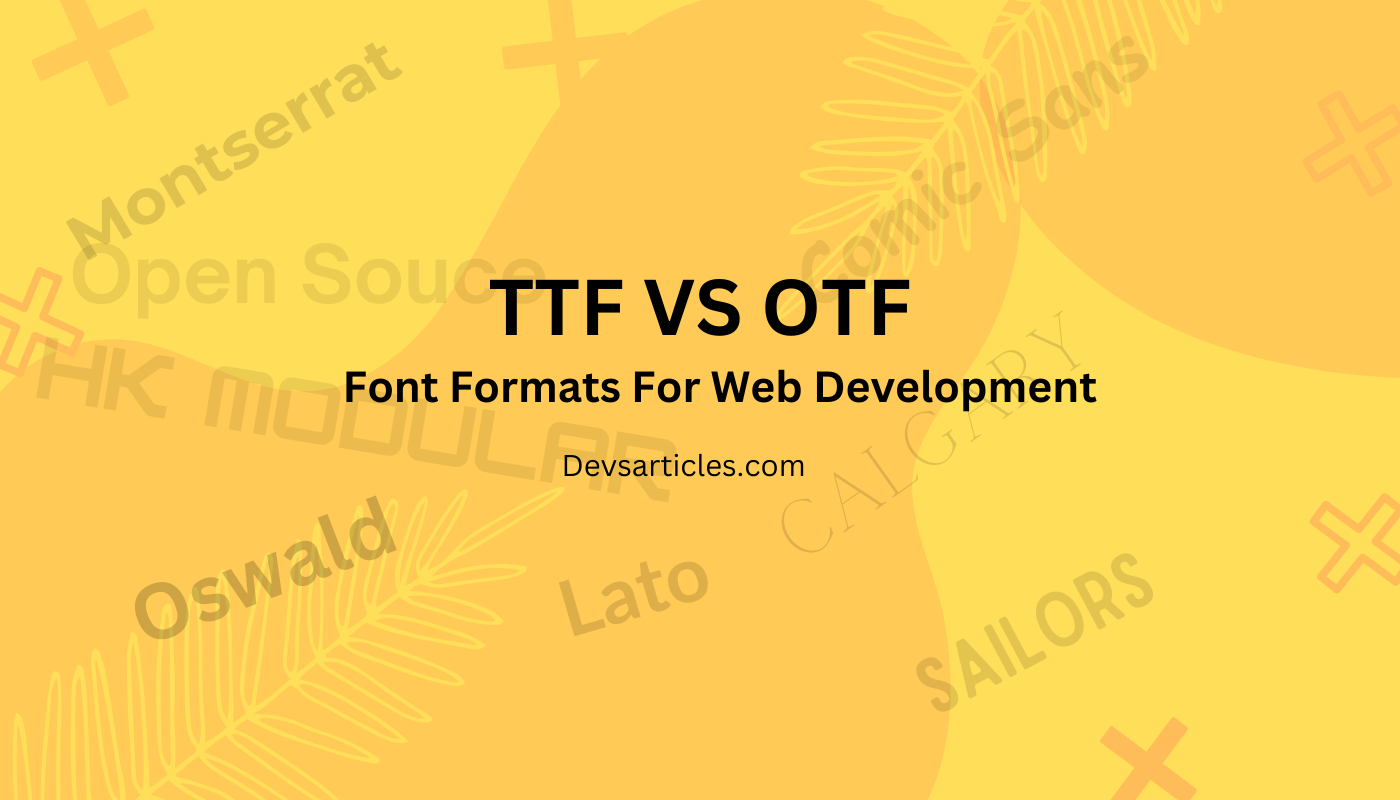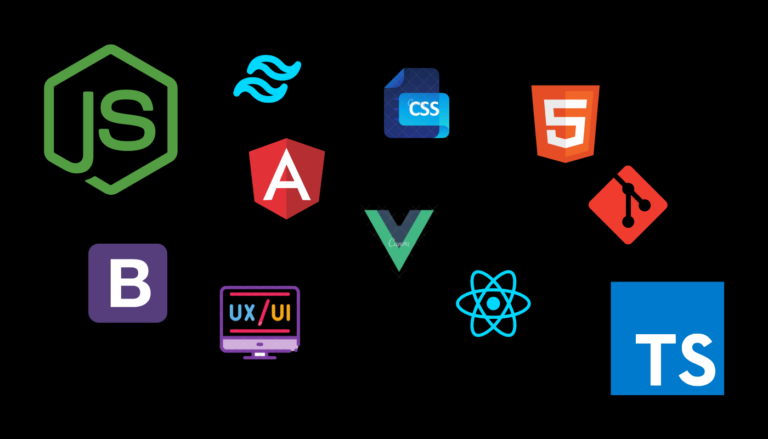Understanding Font Formats for Web Development: A Deep Dive into OTF Vs TTF and More

In the world of web development, fonts are more than just a design element, they are a important part of the user experience. The right font can improves readability, improves a brand’s identity, and improve the overall aesthetics of a website. Among the various font formats available, TrueType (TTF) and OpenType (OTF) are two of the most commonly used in web design. This blog will explore these formats in detail, providing insights into their features, benefits, and best use cases for web developers.
Table of Contents
The Importance of Fonts in Web Development
Why Fonts Matter?
Fonts play a significant role in web design by affecting how users perceive and interact with content. A well-chosen font can improve readability, guide the user’s eye across the page, and create a good brand experience. Conversely, a poor font choice can lead to a negative user experience, making content difficult to read and diminishing the site’s overall appeal.
Font Formats in the Web Context
With the increasing diversity of devices and screen sizes, web developers must choose fonts that are both visually appealing and technically compatible across platforms. Understanding the differences between font formats like TTF and OTF is essential for making informed decisions that improves the user experience.
TrueType Fonts (TTF) in Web Development
TrueType fonts, developed by Apple and later adopted by Microsoft, are widely used in web design due to their simplicity and compatibility. They are supported by most browsers and operating systems, making them a reliable choice for web developers.
Key Features of TTF for the Web
- Broad Compatibility: TTF fonts are supported by all major web browsers, provide consistent appearance across different platforms and devices.
- Ease of Use: The straightforward nature of TTF makes it easy to implement in web projects, even for those with limited design experience.
- Scalability: TTF fonts scale well on different screen sizes, maintaining readability and visual appeal.
Advantages of TTF in Web Design
- Fast Loading Times: TTF fonts typically have smaller file sizes, which can improve page loading speeds—a critical factor in user experience and SEO.
- Widespread Support: The format’s compatibility with various browsers and devices ensures that your website’s typography will appear as intended to all users.
Limitations of TTF for Web Developers
- Limited Typography Features: TTF fonts may lack advanced typographic features like ligatures and alternate characters, which can be a limitation for more design-intensive projects.
OpenType Fonts (OTF) in Web Development
OpenType fonts, developed by Microsoft and Adobe, offer advanced typographic features that for more sophisticated design needs. They are an extension of TrueType, incorporating additional capabilities that make them suitable for complex web projects.
Key Features of OTF for the Web
- Rich Typography: OTF fonts support a wide range of typographic features, including ligatures, alternate characters, and swashes, allowing for more creative and customized web design.
- Cross-Platform Consistency: OTF fonts ensure a uniform appearance across different browsers and devices, which is crucial for maintaining a consistent user experience.
- Extended Character Sets: The format supports multiple scripts and languages, making it ideal for international websites.
Advantages of OTF in Web Design
- Enhanced Design Flexibility: The advanced features of OTF fonts provide web developers with greater flexibility in creating visually appealing and unique typography.
- Professional Quality: OTF fonts are often preferred for high-end web projects where typography plays a central role in the design and branding.
Limitations of OTF for Web Developers
- Larger File Sizes: OTF fonts may have larger file sizes due to their additional features, which can impact page loading times if not optimized properly.
- Complexity: The advanced features of OTF can make them more complex to implement, requiring careful consideration of browser compatibility and performance.
Comparing TTF vs OTF for Web Development
| Feature | TrueType (TTF) | OpenType (OTF) |
| Browser Compatibility | Widely compatible | Consistent across platforms |
| Typographic Features | Basic | Advanced |
| File Size | Smaller | Larger |
| Scalability | Quadratic Bézier curves | Cubic Bézier curves |
| Character Sets | Limited | Extended |
Best Practices for Web Developers
- Optimize Font Loading: Use techniques like font subsetting and compression to reduce file sizes and improve loading times. Consider using web font services like Google Fonts or Adobe Fonts to streamline font delivery.
- Responsive Design: Ensure that your chosen fonts scale well on different devices and screen sizes. Test your typography on various platforms to maintain readability and visual appeal.
- Font Pairing: Use complementary fonts to create a harmonious look. Pairing a bold font for headings with a simple font for body text can enhance visual hierarchy and readability.
- Performance Considerations: Balance the use of advanced typographic features with performance needs. Consider using variable fonts, which allow for multiple styles and weights within a single file, reducing the need for multiple font files.
Conclusion
For web developers, the choice between TTF and OTF fonts depends on the specific requirements of the project. TTF fonts offer simplicity and broad compatibility, making them ideal for projects where performance and speed are priorities. On the other hand, OTF fonts provide advanced typographic features and greater design flexibility, making them suitable for more complex and design-intensive web projects.
By understanding the strengths and limitations of each format, web developers can make informed decisions that enhance the user experience and align with the project’s goals. Whether you’re building a simple blog or a complex e-commerce site, the right font choice can significantly impact the success of your web design.
Incorporate images or tables comparing the features of TTF and OTF to visually engage your readers and improve SEO by using relevant keywords throughout the blog. By optimizing font usage and considering user experience, web developers can create visually appealing and high-performing websites that resonate with their audience.
FAQs
Which font format is better for web development, TTF or OTF?
The choice between TTF and OTF depends on your specific project needs. TTF fonts are ideal for projects where performance and speed are priorities due to their smaller file sizes and broad compatibility. OTF fonts are better suited for projects that require advanced typographic features and more intricate design elements.
How do TTF and OTF fonts affect website loading times?
TTF fonts typically have smaller file sizes, which can lead to faster loading times. OTF fonts, with their advanced features, may have larger file sizes, potentially impacting loading times. To mitigate this, consider using font optimization techniques such as sub setting and compression.






